Sony has had a reputation from the time it entered the Android market that its phones had the design element, but were always a step behind in hardware, and so so on the software side.
The Xperia Z (and its sister phone) the flagship for 2013 heralded a first for Sony that the hardware was at the time of the launch the top most specification among the available droid phones, and was backed up with awesome 5” Full HD Bravia display that was only beaten to the market by the HTC Butterfly (a limited production model) and a cool design that had buyers and reviewers drooling over.
However Sony’s rule as the topmost spec in the market was short lived, as the launch of the flagship phones by the two other giants in the android space, first by HTC with their one, and then followed by Samsung with their Galaxy S IV so the specs eclipsed (marginally as the difference in performance is marginal, as the new flagship only users a slightly newer version of the Snapdragon chipset). But still these competitors (specially the once again all plastic Galaxy S IV) trail on the design element. If this can help Sony rebuild and grow in the Android space is to be seen, but the Xperia Z is a clear indication that Sony wants to get a bigger piece of the smart phone market, and that bodes well for its follow up launch of smaller models that should also feature top of the line hardware.
HARDWARE
The Xperia Z featured a 1.5Ghz Krait configuration, consisting of a quad-core Qualcomm Snapdragon S4 Pro (APQ8064) chipset (this chipset has since been increased in speeds and called Snapdragon 600), backed by the Adreno 320 graphics core, 2GB of RAM. The combination at the time of the launch was the hottest, and matched the Nexus 4 and HTC Butterfly that featured identical hardware.
The processor and graphics offered performance that left the Nvidia Tegra 3 standing, and many say that even the Tegra 4 would be hard pressed to match this performance. The story seems to hold true, as for this year there is no Tegra 4 based releases yet indicated by any manufacturers, and all the leading manufacturers have used Qualcomm units, a bad sign for Nvidia indeed.
Design
Sony continues to do what its good at, which is the design. 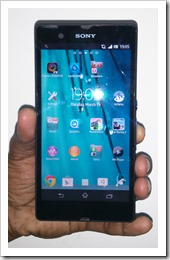 The Xperia Z features a slim sleek profile with a scratch resistant tempered glass front and like the Nexus 4, a glass back. It also features a cool Z sticker, which adds a touch of class.
The Xperia Z features a slim sleek profile with a scratch resistant tempered glass front and like the Nexus 4, a glass back. It also features a cool Z sticker, which adds a touch of class.
The beautiful full HD display only has a very small bezel around it, which makes the phone quite easy to handle for it size, and the overall weight is also minimal.
Since the phone is a water proof and dust proof unit, Sony has omitted the usual camera button that one finds with its phone, but in case you do not want the water resistant feature, the much cheaper and near identical Xperia ZL features the camera button along with a simple plastic back. For many though the glass back design alone will make their purchase decision.
Display
The year 2013 is all about Full HD screens and the move up in size. The Xperia Z is among the first few to feature a full HD screen. The large 5” screen resolution is actually 1776×1080, as the bottom pixels are taken for the soft key buttons similar to the Google Nexus 4.
The display when compared to the phones of 2012 such as the HTC One X, Galaxy S 4 and Nexus 4 show how much more sharper the higher resolution has made things. However users will have to be be vary that apps will still be targeting the 1280×800 resolution that is still the common resolution, and until the Galaxy S IV with a similar resolution enters the market in big numbers, the application compatibility and the fact that applications harness this extra pixels will not be truly applicable.
Sony like HTC has stuck on to TFT type screens, and to me that is a good thing. TFT screens tend to be sharper than the AMOLED screens, and also offer much better visibility when used outdoors. The Xperia Z screen continues on the sharpness that you appreciate, and has great colors.
The problem for Sony is going to be HTC, who with their HTC J/Butterfly/Droid DNA already showed that the could offer a better LCD type screen than the Xperia Z, and the new HTC One is definitely going to do better, so why Sony could not put out a better display for their flagship is going to hurt them.
A common complain that you will see on the Xperia Z is that the color fade based on the viewing angle. To me if i was the user of the phone, i am not going to see that much, unless you want to use it as a group video player (do we do that a lot?). So don’t go by reviews and take this as a bad thing, for me the fact that the neighbor cannot clearly see my screen is a good thing.
Sony also applies it video and picture optimization called Bravia 2, which to many is simply a contrast boost but it works fine, as it pops the colors out.
Camera and Video
Sony though a camera giant, tends to play safe on the camera phone market, and this to me is a sad thing. The Xperia Z has the same size sensor as the 8MP units but this time it features 13.1MP, which may mean sharper photos in good light but in most conditions the pictures are going to look grainy with all those pixels cramped into a such a small sensor. The lens maybe a F2.2, a larger aperture than the traditional F2.4 lenses we have seen with Sony cameras in the past, but the boost is marginal and to me the increase in mega pixels is going to be negative on the photo quality.
The Xperia Z for a phone so large also features are rather small LED flash and i felt the high mega pixel, small sensor and the small flash could only mean that the Z was in no way going to be the best camera phone.
The photo samples confirmed this, as other than in good light the camera struggled to focus and provide anything called good photos. The photos to me looked much worse than what got from my One X, S 3 and the Xperia S unless it was under very good light. Even with the flash indoors under lower light conditions the photos were nothing great.
The focus performance under good light was good but not lighting fast as i had come to see with the HTC One X, and under poor light it struggled.
The camera also features something called a Superior Auto, which does a lot more optimizations than the standard auto mode, and yes this feature does seem to do well but it also means the photos are limited to 12MP (a good thing!)
The other feature that would prove to be an irritating one, and something that Sony users will be puzzled is that the the camera app takes about 5 seconds to load. Why this is remains a mystery, as camera app loaded much faster on the Xperia S, and with so much hardware its a sad story for the 2013 flagship on the still photo arena.
The video of course is capable of 1080p, at 30fps and so it should be with the kind of hardware the Xperia Z is running on. Sony also is heavily marketing that the Xperia Z is capable of doing HDR in video mode as well. On the video department the Xperia Z performs better, but still under low light the crammed sensor will struggle.
The Xperia S also featured one of highest megapixel cameras with a 12MP unit when all the competition were doing 8MP. However based on the pictures i have taken and reviews read, my feeling is that Sony tried to win customers by marketing higher mega pixels than true better picture quality/video.
The unit features the same F2.4 type lens that all are familiar with the Sony Arc S launch, and for some the Arc S remains the better shooter. The extra mega pixels have further highlighted the lower quality of Sony camera images, and this is an area Sony still has work to do.
What is crazy is that Sony has such a pedigree when it comes to compact cameras with small sensors, and that their camera units and processing is being thrashed by Samsung, HTC and Apple is something that Sony should be ashamed.
The video like HTC features constant auto focusing which is great for slow moving footage, but remember to disable this when doing fast moving footage if not you are going to feel sad. The video is also capable of 1080p HD, and the quality is good enough and the camera performs decently even in poor light.
A feature increasingly common with most flagship phones is the ability to take still photos while recording video, the Z can do that, but the still photos are limited to 1MP!, this is rather poor when the HTC and Samsung implementations in 2012 with lesser hardware could already do full resolution stills while video recording.
Video playback and sound
The stock video player is good supporting most formats including MKV and Div X. The video playback is awesome on such a large high resolution screen, and in case you are into videos this phone is excellent.
The audio quality on voice calls are good, but for a phone of this size the loudspeaker performance is nothing great, and it seems this maybe due to Sony trying to make this phone water resistant, and had to sacrifice on the size and design of the speaker. The fact that the phone only has one speaker is also going to hurt it with the HTC One coming out with large stereo speakers on a smaller foot print.
Sony as followed Apple on its new design for the ear phones with the flat type, sadly i could not test these out as I only had the phone for a short while. However the ear phones to me looked a bit budget in the quality of finish, and i felt Sony cold have done better on the quality of finish compared the Apple ear phones.
Storage
The phone only comes with 16GB on-board, a strange decision when Sony always went with 32GB for their flagship phones, and the trend this year is that its 32GB or higher. With the base OS taking a fair amount out of the 16GB, the decision for Sony to reduce the flagship internal storage seems crazy, specially since the phone is not cheap!
However Sony has made up for its miss in the past by including a microSD card slot that is capable of taking cards upto 64GB, providing the expansion capability.
Battery
With a more powerful chipset and graphics, larger screen ,and higher resolution the battery drain is going to be a question on everyone’s mind. Sony has boosted the battery of the Xperia Z with a fairly large 2330mAh unit, and the phone needs it.
Gsmarena showed the phone standby performance is great (it should with such a large battery) but once you start using that display things don’t last that long. Under normal use the phone will struggle to last a day if the display is used a lot, as the display is the key battery consumer.
The battery is not a removable type, which is not a big problem unless your battery dies on you. With so many portable external battery chargers available the removable nature of the battery is not a big concern anymore, but how many recharge cycles can this battery hold with the continuous drain on this unit will only be proven on a long term tests.
Software and Customization
The Xperia Z launched with Jelly Bean but not the latest version, opting to go with the 4.1.2 version rather than the 4.2.1 version that may have improved performance. The update for 4.2.1 is due but with competing flagships launching shortly with 4.2.x version, Sony needs to move fast, but it seems that is not going to happen.
Sony in recent times has not attempted to include any heavy customizations, which has also enabled the phones to provide good performances. The Xperia Z does have some level of customization, but compared to the Samsung and HTC implementations, the Sony implementation is light but also lacking in features.
There is now a permanent pop up feature that you can use for some apps, which is a bit like the multi-view feature by Samsung. Sony wall papers look great and add to the finish of the phone.
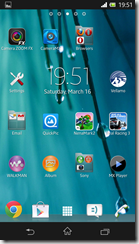

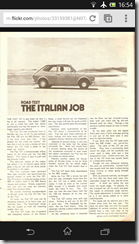

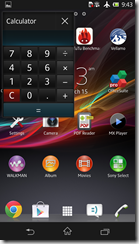


The extra resolution means split screen implementation for the calendar and email are not cramped and easily viewed. However some of the widgets like the calendar widget still have too much white space and don’t take benefit of the higher resolution.

Usage issues and problems from known from forums
- The phone when used for browsing in particular tends to get very warm at the top bottom. The glass back does not help here, as it amplifies the heat. The heat is easily noticeable even after a short period of browsing.
- The screen though supposedly rugged has several examples that have cracked under light use, indicating their maybe a design issue rather than a quality of material problem.
- There is also a reported issue of the phones dying if the battery charge goes very low, and the phone sometimes can be brought alive using a recovery process but not always. Sony has confirmed this issue, which is a big minus point for the phone.
- The loudspeaker if immersed in water will be low until the water clears out, again a poor design issue
- The camera interface does not rotate and seems to have been designed to work with the ZL hardware camera button
Performance
I have compared the performances of last year flagships and the Nexus 4, along with the Xperia S to give an indication of the improvement in performance.
One has to note that the graphics and internet rendering performance cannot be compared apples to apples since the Xperia Z has to render on much greater pixels, so in case the performance matches that alone is a major achievement.
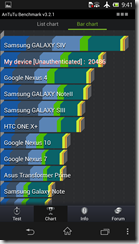

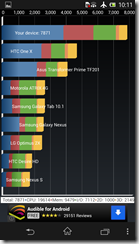
Compared to LG Google Nexus which has a lower resolution, the Xperia Z screams and also shows that Google does not optimize its phones much.
Compared to the 2012 flagships, the Xperia Z is able trounce them on all departments which indicates how much more powerful the Snapdragon S4 Pro processor is. The slightly faster but near identical Snapdragon 600 on the HTC One and the international version of the Galaxy S IV will surpass this but not by much. Except the next update from Sony to make things even better.
The chart also shows that the quad core krait in the Xperia Z is able to offer a heavy improvement compared to the dual-core version that was featured in the HTC One S.
| Chipset | GPU | Android | Antutu 3.0.x | Quadrant | Nenamark | Vellamo 2.x | GeekBench 2.0 | |
| Sony Xperia Z | 1.5Ghz Quad Snapdragon S4 Pro | Adreno 320 | 4.1.2 | 20486 | 7871 | 59.9 | 2178 | 1991 |
| Sony Xperia S | 1.5Ghz Dual Snapdragon S3 | Adreno 220 | 4.0.4 | 8219 | 3306 | 37.9 | 1393 | 996 |
| HTC One S | 1.5Ghz Dual Snapdragon S4 | Adreno 225 | 4.0.3 | 10558 | 4707 | 61.0 | 1535 | NA |
| HTC One X | 1.5Ghz Quad Tegra-3 | Nvidia Tegra 3 | 4.1.2 | 14781 | 6805 | 57.1 | 1578 | 1359 |
| Samsung Galaxy S III | 1.4Ghz Quad Exynos 4412 | Mali400MP Quadcore | 4.0.4 | 14300 | 5343 | 58.9 | 1569 | 1824 |
| LG Google Nexus 4 | 1.5Ghz Quad Snapdragon S4 Pro | Adreno 320 | 4.2.1 | 17640 | 5014 | 57.8 | 1302 | 1302 |
Conclusion
The Xperia Z has many things going its way. It definitely has a great design, and is maybe only second to the upcoming HTC One (the Galaxy S IV looks just like the Galaxy S 3, so Samsung yet again fails on the design element and quality of materials).
The design is backed by a a very good screen that is also large, and offers full HD resolution. Sony has also gone to the extra length of making the phone water resistant and dust resistant. Practical things since that means if the phone was to get wet in the rain or was in your pocket, this phone is going to come through fine, and that is one worry you don’t need to concern over.. nice.
The Xperia Z features a great processor and graphics, that means excellent performance in games, browsing, video, etc. Add the microsd expansion slot it makes it an ideal multimedia device. Well done Sony.
BUT the poor camera is a big negative for a camera of this price and status, and Sony’s decision to go ahead with a ridiculous 13MP sensor that is the same size as the 8MP sensor we have seen in 2012, and backed up with a smaller flash only made things harder for the Sony software guys working on the still photo area. The performance of the camera to me is worse than most 2012 phones, including Sony’s own phones, sad.
The heating issue and the durability of the screen is also a concern, and adding a clunky screen protector is going to hurt, but here Sony has a solution, opt for the ZL version with the plastic back, but then you loose the water resistant feature, ouch.
However no phone is perfect, the Xperia Z ticks many good things and with a design so elegant, it must sell well. But the world seems to buy phones based on marketing, and Apple and Samsung are very good here, and that is something Sony seems not capable of matching, and until that changes the Xperia will remain second or third to most.



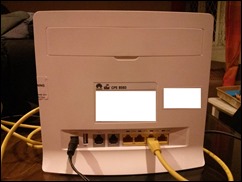
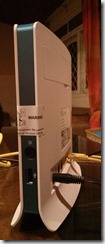
 Dialog sales chaps indicated the device only works with 4G / LTE networks, however based on the specifications the device should also connect to 3G networks in the event there is no LTE network, however i need to test this 🙂 I did check the admin web app, and yet the modem does have Auto, LTE only, WCDMA only and GSM only.
Dialog sales chaps indicated the device only works with 4G / LTE networks, however based on the specifications the device should also connect to 3G networks in the event there is no LTE network, however i need to test this 🙂 I did check the admin web app, and yet the modem does have Auto, LTE only, WCDMA only and GSM only.